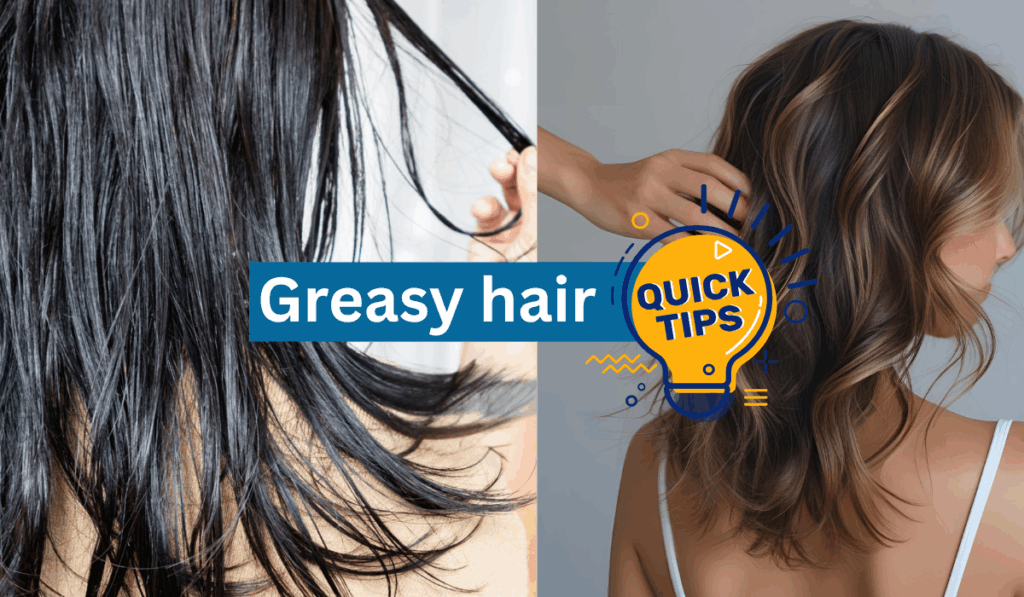Greasy Hair: Causes, Solutions, and Expert Care Tips
Greasy hair is a common struggle that affects many people, regardless of age or hair type. If you find your hair looking oily and flat just a day after washing, you’re not alone. While it can be frustrating, the good news is that greasy hair is manageable with the right care, habits, and products.
In this blog, we’ll explore the causes of greasy hair, share practical tips to reduce oiliness, and provide a complete care routine to help you maintain fresh, voluminous locks all day long.

What Causes Greasy Hair?
Greasy hair is usually the result of excess sebum production by your scalp. Sebum is a natural oil produced by sebaceous glands to protect and moisturize the scalp and hair. But when too much sebum is produced, it can leave your hair looking greasy, limp, and dull.
Here are a few common causes:
- Over-washing your hair – Washing too frequently can strip your scalp of natural oils, triggering it to produce even more oil.
- Touching your hair often – Constantly running your fingers through your hair can transfer oil from your hands.
- Using the wrong products – Heavy conditioners or styling products can weigh your hair down and make it appear greasier.
- Hormonal changes – Hormones can increase oil production, especially during puberty, menstruation, or pregnancy.
- Diet and lifestyle – Eating greasy or high-sugar foods and not drinking enough water can affect your scalp health.
Top Tips to Prevent Greasy Hair
Reducing greasiness requires a combination of smart habits and effective hair care strategies. Try these tips to control oil and keep your hair looking clean:
1. Avoid Washing Every Day
Though it may seem counterintuitive, washing your hair too often can dry out your scalp, prompting it to produce even more oil. Aim to wash your hair every 2-3 days.
2. Use a Sulfate-Free, Clarifying Shampoo
Look for shampoos with ingredients like tea tree oil, charcoal, or salicylic acid to remove buildup without over-drying. Sulfate-free shampoos cleanse gently and won’t trigger excess oil production.
3. Don’t Skip Conditioner – Just Use It Right
Use a lightweight, oil-free conditioner only on the mid-lengths and ends of your hair. Avoid applying it to the roots, where oil tends to build up fastest.
4. Rinse with Cold Water
Hot water can overstimulate your oil glands. Rinsing with cold or lukewarm water helps seal your hair cuticle and prevent excess oil production.
5. Use Dry Shampoo Between Washes
Dry shampoo is a game-changer for greasy hair. It absorbs oil at the roots and refreshes your hair without water. Look for products that don’t leave a white residue and contain natural ingredients like rice starch or kaolin clay.
Greasy Hair Solutions: What Really Works
If you’re still struggling, consider these tried-and-true solutions that go beyond daily maintenance:
✨ Scalp Detox Treatments
A deep-cleansing scalp detox once a week can help remove buildup, dead skin, and excess sebum. Look for detox masks with charcoal, apple cider vinegar, or clay.
✨ Switch to a Silk Pillowcase
Cotton pillowcases absorb oil and can trap dirt, causing more grease buildup overnight. Silk or satin pillowcases reduce friction, helping your hair stay cleaner longer.
✨ Limit Heat Styling
Using heat tools like blow dryers and straighteners can stimulate more oil production. If you must use heat, apply a lightweight heat protectant and avoid high temperatures near the roots.
Greasy Hair Care Routine
Here’s a simple, effective weekly hair care routine for oily hair:
| Day | Step |
|---|---|
| Day 1 | Wash with a clarifying shampoo + condition ends only |
| Day 2 | Use dry shampoo at the roots in the morning |
| Day 3 | Tie your hair in a loose style or bun to manage oil |
| Day 4 | Rinse with cool water and co-wash (conditioner only on ends) |
| Day 5 | Apply scalp scrub or detox mask |
| Day 6 | Rest your scalp, avoid touching or brushing too much |
| Day 7 | Wash again with clarifying shampoo |
When to See a Professional
If you’ve tried these solutions and still experience excessive oiliness or scalp discomfort, consider consulting a dermatologist or trichologist. Underlying issues like seborrheic dermatitis or hormonal imbalances may require medical attention.
Final Thoughts
Greasy hair doesn’t have to ruin your good hair days. By understanding the root causes and adjusting your routine, you can manage oil levels and enjoy clean, voluminous hair that lasts. Choose lightweight products, avoid overwashing, and take the time to treat your scalp right.
For the best results, stay consistent and patient—your scalp will adjust over time.
Follow us on Instagram
